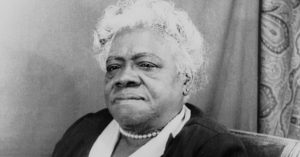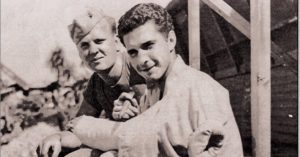I’ve always loved history.
During hard times like these, I believe we can find great encouragement by looking back on the men and women who came before us. We often forget that older generations faced their own share of hardships. They saw war, segregation, and injustice. Yet, despite everything, the past is filled with extraordinary heroes and selfless leaders who changed our world for the better. The trouble is, not all of them make it into our school curriculum.
As educators, we believe all students have the potential to do incredible things. Yet, as recent events have shown us, not all students receive the same opportunities. Part of this is due to who we choose to study in history, and who ultimately gets left on the cutting room floor. If we hope to make diversity and equity a priority in our classrooms, we need to give our students diverse heroes they can aspire to. Luckily, there are plenty to choose from.
Here are just 5 historical figures to diversify your lessons:
Kamehameha the Great – The First Ruler of Hawaii
Despite being our country’s 50th state, very few Americans know the history of Hawaii. It was Kamehameha the Great who first unified the islands of Hawaii into an independent kingdom. Kamehameha was born to an auspicious family and was said to be a formidable warrior with a keen intellect. By modernizing his military and training warriors in new tactics, he was able to assert his dominance over the other islands and establish himself as the first ruler of all Hawaii. However, Kamehameha was more than a just renowned conquer.
As ruler of Hawaii, Kamehameha established diplomatic connections, cultivated trade, reformed agricultural development, and standardized the Hawaiian legal system. In fact, his “Law of the Splintered Paddle” (which guaranteed all people safe travel) is considered by many to be one of the oldest Human Rights laws!
Mary McLeod Bethune – First Lady of the Struggle
Mary McLeod Bethune was an African American educator, civil rights leader, and advisor to five U.S. presidents. Bethune took an interest in teaching at an early age. Living in a time of widespread segregation, she understood that education could be a powerful tool for dismantling public prejudice. She founded schools for children in Daytona Beach, and her high standards of excellence showed the country what African Americans could achieve. These accomplishments would propel her to the halls of government, where she became good friends with Franklin and Eleanor Roosevelt.
Throughout her life, Mary McLeod Bethune lectured, wrote, organized, and fought tirelessly for Civil Rights. It’s no surprise she would earn the title, “First Lady of the Struggle.”
Daniel Inouye – War Hero and Statesman
Few men have given more for their country than Daniel Inouye. As the son of Japanese immigrants, Inouye grew up in Honolulu where he planned to study medicine at the University of Hawaii. However, following the attack on Pearl Harbor in 1941, Inouye put his studies aside and enlisted into the US Army. Though initially denied due to his ethnicity, Inouye persisted until he was eventually accepted into the 442 Infantry Regiment. During the war he would lose his right arm to a grenade and received several military decorations, including the Medal of Honor (the nation’s highest military award).
After the war, Inouye ran for congress to help combat the persisting stigma against Asian Americans. He became the first Japanese American in the House of Representatives and continued to serve in government until his death in 2012.
Sally Ride – First American Woman in Space
It takes a lot of grit to be the first American woman in space. After earning her PhD in physics in 1978, Sally Ride was selected by NASA to become one of the first female astronauts. Ride was subjected to much media pestering due to her gender, but she refused to be intimidated. Not only would she become the first American woman in space as part of the 1982 Challenger crew, to this date, she also remains the youngest American astronaut, having reached space at the age of 32. After NASA, Ride became a professor of physics at the University of California and director of the California Space Institute.
She would later go on to write several popular children’s books with her partner and was posthumously awarded the Presidential Medal of Freedom by President Barak Obama.
Guy Gabaldon – The Pied Piper of Saipan
The Asiatic-Pacific Theater saw some of the deadliest fighting in WWII. Yet, it’s thanks to Guy Gabaldon that many of those involved were able to survive. A Mexican American who grew up in Los Angeles, Gabaldon was a United States Marine who served in the Battle of Saipan. Gabaldon didn’t believe the Japanese were as hateful and inhuman as his commanders claimed. So, one night, he went against orders and walked into the jungle alone. The next morning, he returned with two Japanese soldiers he had convinced to surrender.
Despite being severely reprimanded, Gabaldon would continue his efforts night after night. Altogether, he would convince over 1,300 soldiers and civilians to surrender peacefully to Allied forces. His efforts ultimately earned him the Navy Cross and the nickname, “The Pied Piper of Saipan.”
Now it’s Your Turn!
Need ideas for ways to use this information in class?
- Read these descriptions aloud as short storytimes during a transition between subjects.
- Place pictures of these heroes around the room and ask students to read the descriptions and match them to the hero.
- Have students choose one of these heroes to make a short YouTube or TikTok video about.
- Find books on these heroes and add them to your classroom library.
We hope you are all staying healthy and safe during this difficult time. For more free educational resources, or ideas on how to promote healthy SEL, simply follow this link!
*Image courtesy of wikimedia commons.






